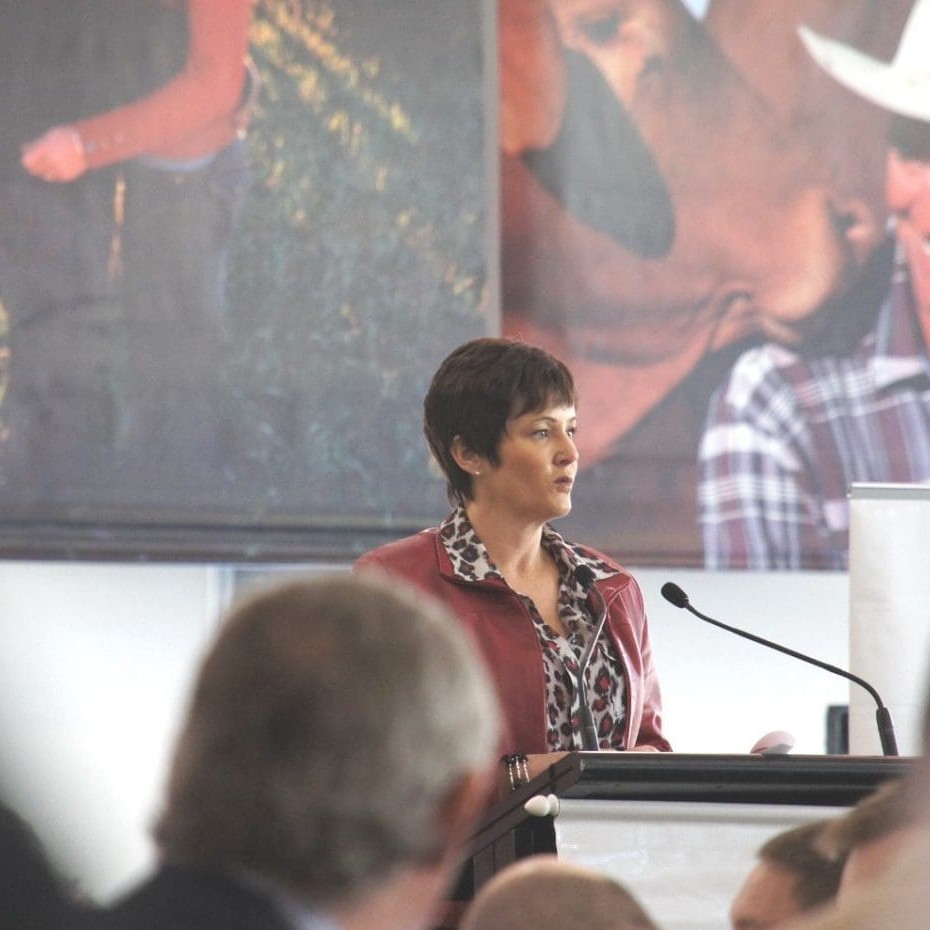 The spectacular five-year recovery in Coles’ supermarket retail performance has been heavily influenced by the company’s beef offer, a Brisbane Ekka audience heard last week.
The spectacular five-year recovery in Coles’ supermarket retail performance has been heavily influenced by the company’s beef offer, a Brisbane Ekka audience heard last week.
The company’s head of quality, policy and governance, Jackie Healing, told a Rural Press Club breakfast audience at the show that the way customers viewed things, the most important piece of the supermarket retail puzzle to get right was the fresh food proposition.
“The most important piece within that fresh food segment is the meat offer, and the most important piece of the meat offer is beef,” she said.
“If you haven’t got great quality fresh beef in your retail offer, from the customer’s perspective, you are not presenting a strong proposition to come into your store.”
As a retailer, that was about capturing the ‘centre-of-plate’ purchase (meat protein) because securing that item heightened the prospect of capturing the rest of the customer’s shopping basket, which in Coles case is worth on average around $85 per visit.
Coles today serves 40 million customers each week through its 740 stores across Australia, and claims to be the world’s fastest growing retailer.
“When I joined Coles in 2006 it was a badly broken business,” Ms Healing said.
“It had really lost sight of its main purpose, which was to serve customers, and was in a spiral of decline through trying to cut costs to increase profitability. By doing that it was reducing quality and that in turn was disappointing customers.”
The turnaround which has occurred in performance was based on some of the fundamentals in retailing, she said.
“First of all, we want to give our customers the best possible value, where ‘value’ includes a combination of price and quality, as well as the standard of service they receive in the retail environment.”
“Nobody feels they are getting a value experience if they have to queue too long at the checkout, or can’t get an explanation from the butchery counter about the best cut of meat for the meal they are preparing.”
Ms Healing said five years ago, when Wesfarmers bought the Coles business, many would have felt Coles did not stock that great piece of beef around which they wanted to build a meal, instead going to a specialist retailer, a market or whatever.
“But our push is to get the consumer to believe that if they come to Coles they can find a great beef offer, and the beef they want, as well as the vegetables and whatever else to go with it,” she said. “As a result, stunning quality fresh food is absolutely the core of Coles’ current five year turnaround strategy.”
As part of this, Coles is creating space for its fresh food offer within stores by making its dry goods and grocery line areas more compact and efficient. That includes much more meat-cutting in store than what used to be the case, seafood counters and other features that customers say are important.
$800m spend on cold chain
 The flip-side to that was that the fresh food side of the business is a lot more expensive to run than dry goods or grocery.
The flip-side to that was that the fresh food side of the business is a lot more expensive to run than dry goods or grocery.
Coles push into fresh foods had required big investment behind the scenes, through distribution centres and the company’s own cold chain, and in-store training.
“It’s really critical that we manage those chilled chains effectively, and that costs a lot of money,” Ms Healing said.
“A one-degree variation in temperature in retail-ready meat like mince will take 20 percent off the shelf-life of that product, so it is really critical that we manage those chilled chains tightly.”
That costs a lot of money – in Coles case, $800 million in investment in cold chain across the business over the past five years.
There were also compromises in space allocation. While customers loved the return of the ‘manned meat counter’ model, and being able to see the meat being cut and to talk to butchers, the amount of fresh meat that can be sold across a meat counter versus the chilled meat case holding MAP-packed portions was much less.
Availability of product is another big focus as part of the Coles rebirth. The company’s target is now 99.5pc availability, across all 40,000 stocked lines.
Adding to that availability challenge was that peak shopping times for customers are now between 5pm and 8pm in the evening, and surprisingly to many, the peak shopping day is now Sunday (especially between 2pm and 6pm).
“Along with centre-of-plate protein, there are probably four items that are destination-determining product lines, in the customers’ eyes. While they vary a little from person-to-person, in the main, they include items like coffee, bread, breakfast cereals and toilet rolls,” Ms Healing said.
“If those five (including the right red meat option) are not in stock when they visit, they’re going to leave the store, especially if they are brand-loyal,” she said.
The response to that availability challenge was about ordering systems, forecasting systems, promotional planning and effective distribution operations.
Ms Healing said because an attempt was being made to build Coles as the ‘preferred supermarket’ and Coles brands as the ‘preferred product’, it was absolutely critical to get key challenges like availability and value right.
“It is about presenting Coles as a brand, like Nike or Holden, rather than just somewhere for customers to go to shop.”
- Tomorrow on Beef Central: Coles’ Jackie Healing discusses customer hierarchy and the push into stronger brand claims over animal welfare, environment, and sustainability.



HAVE YOUR SAY